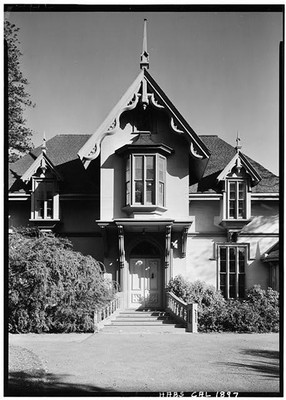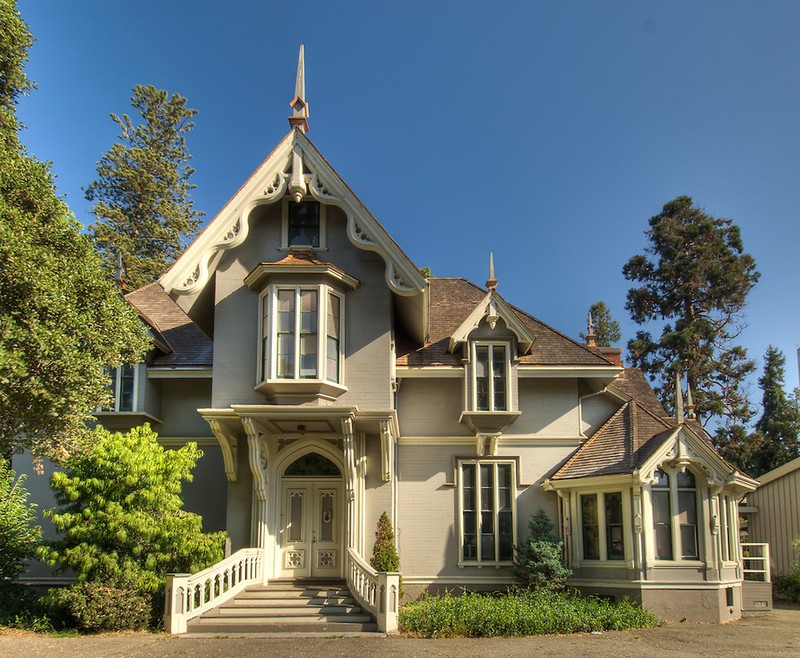J. Mora Moss House
Introduction
Text-to-speech Audio
Images
A Black and white photo of the House.

The house as it looks today.

Backstory and Context
Text-to-speech Audio
Born in Philadelphia in 1809, Joseph Moss came to San Francisco in 1850 to work as a bank clerk. It was from this role that he was able to amass his fortune in banking, importing fur and ice, building canals and railroads, as well as telegraph and utility services. Having spent the majority of his life working in the city, Moss wished to require somewhere quiet on the outskirts of the city. He married his housekeeper, Julia Theresa Wood and named the estate Mosswood.
Moss died at Mosswood on November 21, 1880 and his wife, Julia, retained the title to the estate. In the 1890s she made several additions to the home including a single story study, modifications to the library, and the addition of a large bay window in the master bedroom. Mrs. Moss died in 1904 while vacationing in Europe, the couple never had any children.
When Moss first purchased his estate it was made up of some 27 acres (110,000 m2), more than double the size of the modern-day Mosswood Park. Moss's property stretched from Telegraph Avenue to Glen Echo Creek and from Moss Avenue (now West MacArthur Boulevard) to 36th Street. But after the death of Julia, the estate was subdivided. The northwestern section of the property was sold to developers who built single-family residential homes on it. The remaining 11-acres (45,000 m2), which contained the main house, went to the probate court and was put up for public auction.
Oakland Mayor at the time, Frank Kanning Mott, pushed to save as much of the land as possible for public greenspace. The city didn't have the funds at the time and the land was sold to a consortium of bankers. However, in 1907, Oakland voters approved a bond measure to buy the estate from the bankers and turn the area into a municipal park, thus preserving the main house. Final transfer of the property came in 1912 at a cost of over US$100,000.
In the following decades, the park's grounds were improved with the addition of an amphitheater, a decorative pergola adjoining Broadway, tennis and basketball courts, as well as children's playgrounds. The wrought-iron fence that had surrounded the Park was taken down and donated to the War Effort in 1942.
Sources
J. Mora Moss House. Local Wiki. Accessed June 24, 2017. https://localwiki.org/oakland/J._Mora_Moss_House.
